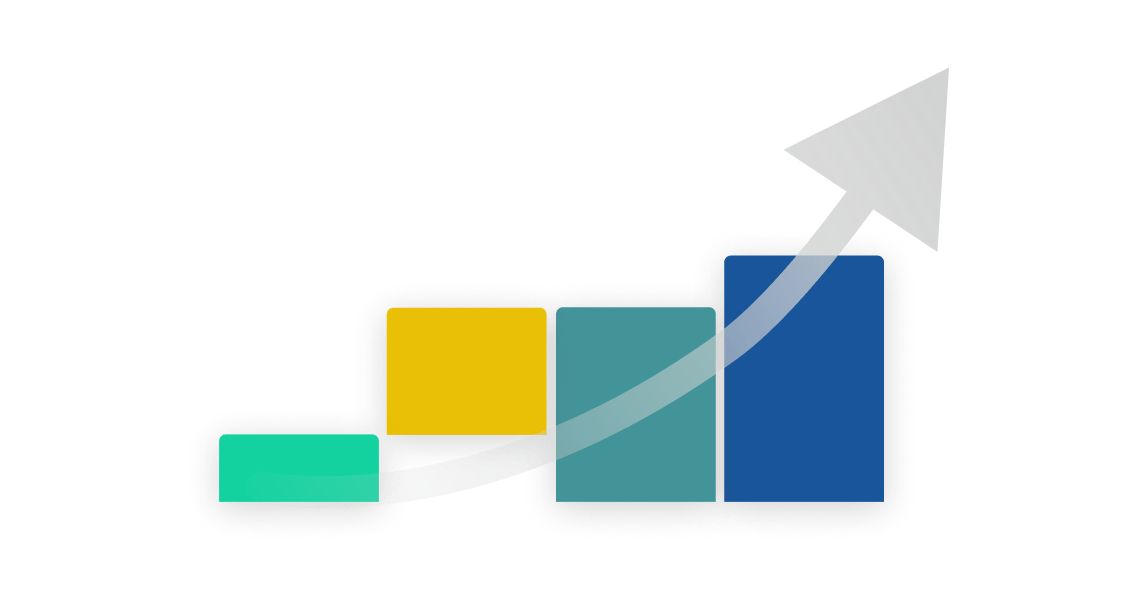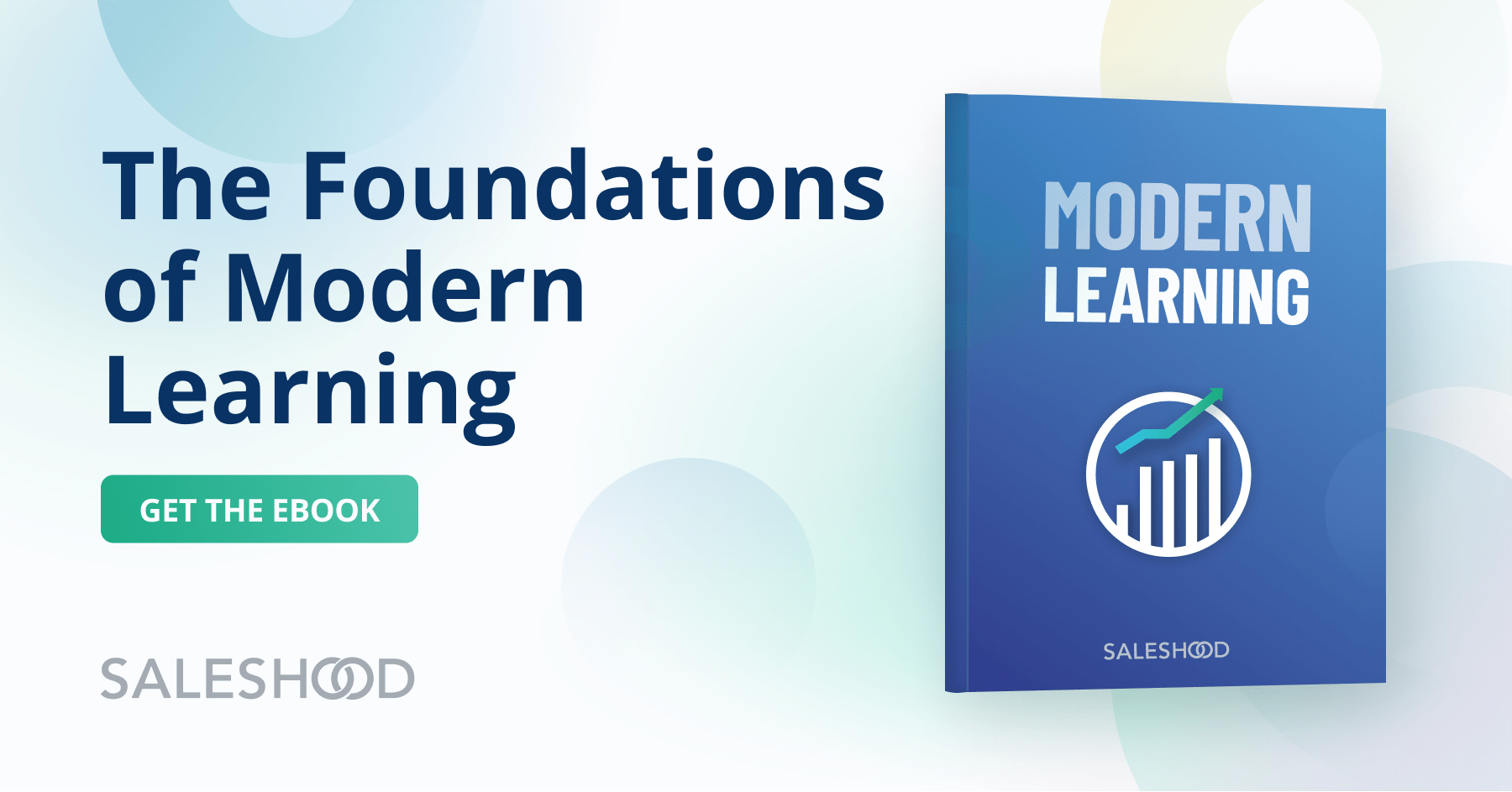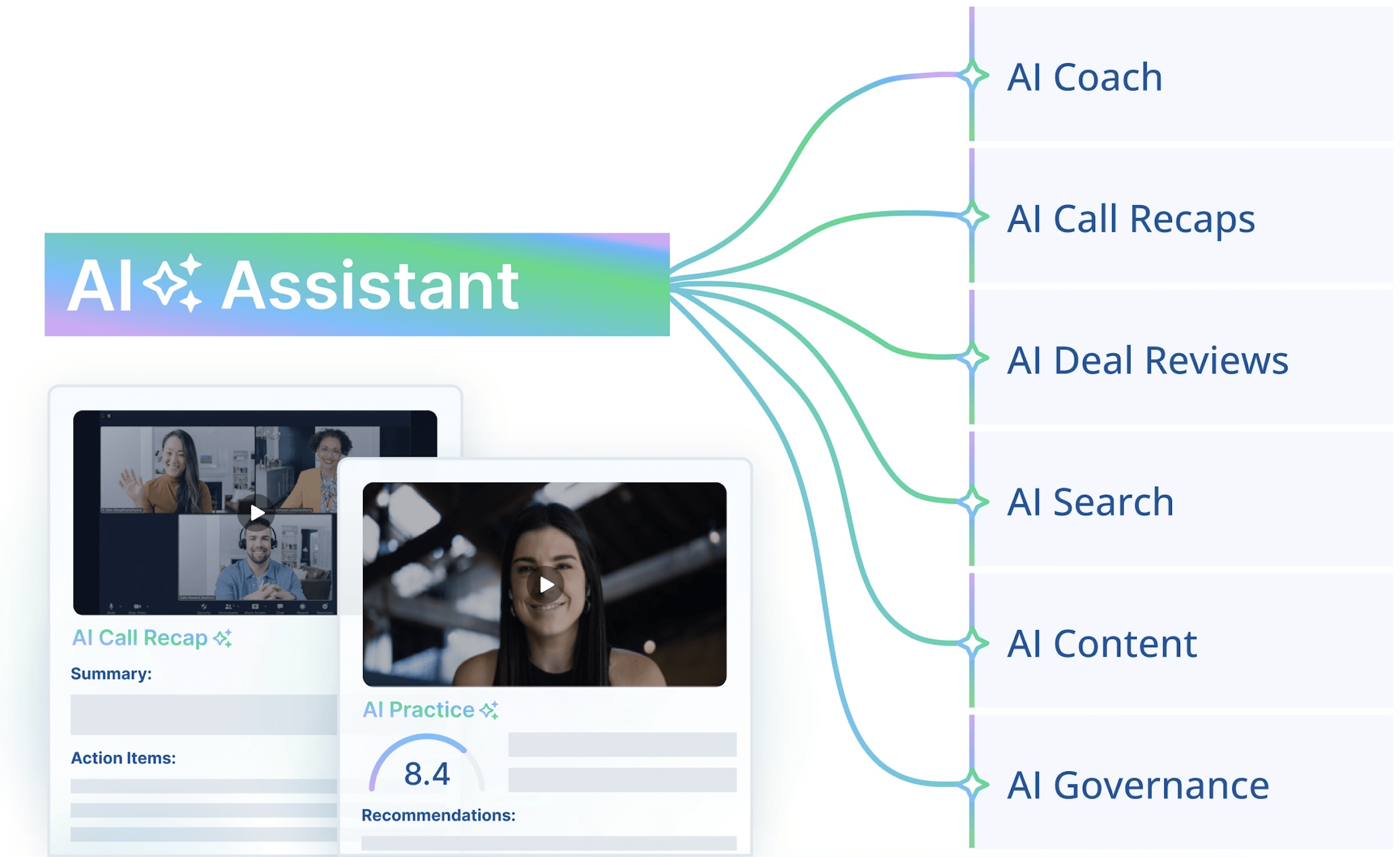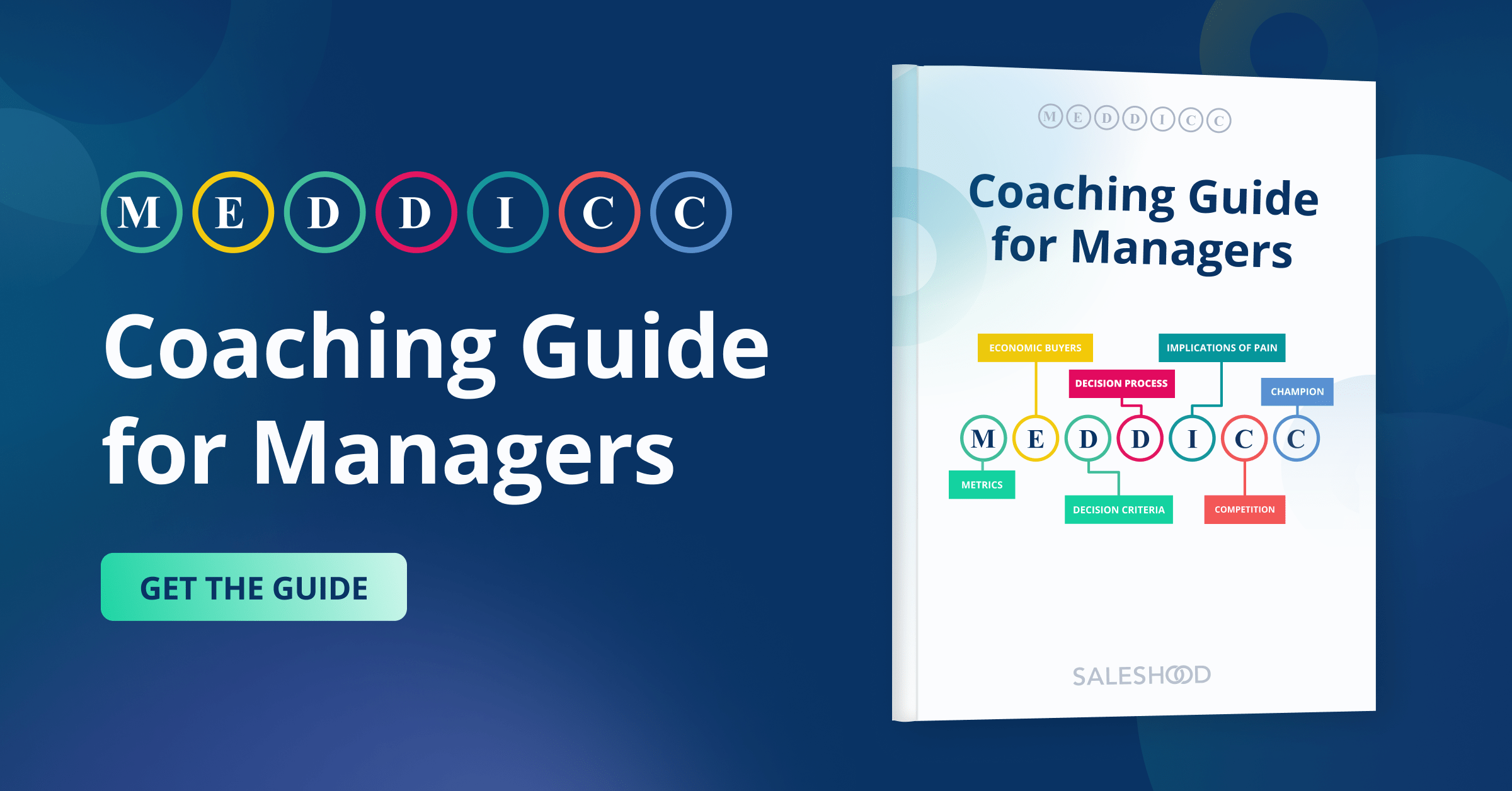Effective sales teams, led by experienced revenue leaders and powered by skilled salespeople, drive business success. However, these skilled team members don’t grow on trees – you need to develop them yourself. And that begins with effective sales training.
With the right training, you can take your sales team to the next level. Through targeted, tailored, and proven training strategies and practices, you’ll equip your sellers with the skills and knowledge they need to win any deal.
That’s why we’re excited to share sales training insights and trends proven to boost sales performance. The following blog will answer some of the most important questions about sales training.
- What is sales training?
- Why sales training matters, and what revenue metrics to measure?
- What’s the difference between sales training and sales enablement?
- What are strategies to improve sales performance with sales training?
- What does high–impact sales training look like?
- What’s better? In-person or virtual sales training?
- How can generative AI and ChatGPT enhance sales training?
- What are the most important sales skills and competencies?
- What is role-based sales training and why’s it important?
- Why do you need to choose a sales methodology?
- What are some top sales training courses?
What is sales training?
Sales training is a process designed to improve the skills, knowledge, and effectiveness of a salesperson or sales team. It can apply to a wide range of concepts, including sales management, the sales process, and sales conversations, helping to elevate your team’s performance as a whole.
The best sales training programs help sales representatives learn and improve their selling techniques, and turn those techniques into repeatable processes. Essential selling skills are key to building customer relationships and consultative selling skills. Some of the best sales training programs also focus on sales management training, sales process and sales conversations. Effective sales training can be a virtual course or a live in-person seminar or workshop.
The Training Industry shares; the best sales training programs involves the personal development of skills and techniques related to creating and exploring new sales opportunities, as well as closing sales for an organization.
Sales training generally comes in the form of different programs that revolve around achieving a purpose, like improving specific sales skills or introducing new strategies and methodologies for sales teams to implement, like the Challenger Model.
The best sales training programs start with an assessment of a sales team’s and salesperson’s performance and provide specialized skill development via learning, practice, role-playing, assessments, and reinforcement.
Sales training programs are often flexible, taking place through virtual courses or live in-person seminars or workshops that last anywhere from a few hours to a few weeks.
Some sales training programs even earn individuals a certificate, badge, or another type of professional accreditation that adds personal incentive to their motivation.
Why sales training is crucial for sales success
Sales training is important to revenue leaders because it helps boost the sales efficiency of their teams, focusing on ways to optimize their sales process and buyer journey. With the right training, more customer teams can excel like top performers, leading to more consistency in their performance and better revenue outcomes.
Sales training will have different benefits depending on the focus, which you can measure with sales enablement software that helps you correlate sales training activities to revenue outcomes.
For example, front-of-the-funnel sales training impacts sales opportunities, pipeline development, and deal qualification, while back-of-the-funnel training impacts sales cycle time and deal size. Measuring these metrics before and after completing training will provide insight into its effectiveness.
Here’s a list of sales training benefits you should expect to realize.
Better Sales efficiency
Sales training is a proven method for elevating sales teams’ efficiency, allowing them to hit quotas faster and more reliably and driving improved quota attainment.
Sales pipeline growth
Sales training is a great way to master skills to build a high-quality sales pipeline quickly. New sales pipeline developed after a sales training is usually an early indicator that the training is making an impact.
Improved sales cycle time
Sales training is a catalyst for reducing sales cycles by teaching teams the skills and techniques required to drive deal qualification, including uncovering compelling events and building mutual action plans.
Improve win-rates
Another goal of sales training is to improve sales plays and deal execution to boost win rates. Training sellers to engage champions and reach decision-makers will increase success. Teaching them to introduce and co-create mutual action plans with champions and economic buyers will also lead to better outcomes.
Increased deal size
Sales negotiation training and pricing training will arm sellers with the conversational confidence to successfully execute winning deal strategies. Sales negotiation training will teach sellers how to effectively use give/get tactics to keep their price points higher without giving away too many discounts.
Faster onboarding new sellers
A well-crafted and organized sales onboarding program, delivered to new hires just-in-time as they ramp and progress, will help increase the chances that more sales representatives hit their revenue targets faster. Expect to see new pipeline created faster and time to first deal and time to second deal improve.
Sales training vs. sales enablement
We get asked all the time, “What’s the difference between sales training and sales enablement?.
Sales training is designed to shift a sales team’s attitudes and behaviors through group learning, practice, workshops, and best practices. It encourages sellers to master proven sales techniques and personalize their own style of selling and communications.
Sales enablement is about making the sale process and buyer’s journey more efficient with tools, systems, and resources. It looks more broadly across the buyer’s journey, including sales content, prescriptive sales aids, digital sales rooms, buyer collaboration, and buyer insights.
Both practices are complementary. Sales training is a pillar of sales enablement, teaching team members at every stage of the customer journey how to be more effective. Enablement also measures the effectiveness of training, content, and buyer engagement to see what’s working and what isn’t in your go-to-market.
To recap, sales enablement provides customer teams with the resources and tools needed to progress a deal. Sales training teaches customer teams the activities, processes, and tools to be effective and valued sales professionals.
| Learn more about Sales Enablement by reading a chapter from Elay Cohen’s book, Enablement Mastery. Download the book chapter here. | 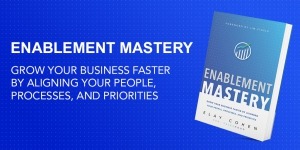 |
10 key sales training strategies that drive success
Over the years, we have seen, executed and measured the sales training of hundreds of thousands of sales professionals. Here are some of our lessons learned and tips to avoid failed sales training.
1. Explain the why behind the sales training strategy
Sales training fails when the sales team doesn’t understand the goal of the training or how it connects to the sales process. When leaders don’t clearly outline the strategy, teams become misaligned, and their willingness to make the strategy work decreases.
2. Focus on sales performance metrics that matter
Be clear on the goals, metrics, and KPIs that the sales training impacts. Look for leading indicators first, then lagging indicators.
Here are some examples of the most common sales metrics and KPIs impacted by sales training, with a focus on leading indicators:
-
-
-
- Meeting scheduled (#)
- Lead conversation (#, $)
- Sales pipeline created (#, $)
- Stage/deal progression (#, $)
- Win-rates (#, $, %)
- Sales cycle time (Time)
- Cross-sell/up-sell (#, $)
- Renewals (#, $, %)
- Ramp time (Time, Revenue Contribution)
- Average selling price ($)
-
-
We recently published a blog called Measuring sales performance: Leading vs. lagging indicators. This blog will help sales enablement and revenue leaders identify, measure, and improve the most impactful metrics, KPIs, and activities that positively impact revenue outcomes. Click here to read or click on the image on the right.
4. Train teams over an extended period of time
In sales training, ongoing learning is more effective than cram sessions. Spread classroom learning of new concepts over a period of time, for example, two-hour sessions once a week for six weeks.
Don’t make lessons too long. Using bite-sized learning modules, different modalities of learning (blended learning), and ongoing practice, you have a much better chance that the concepts taught will actually be implemented in real life. Top sales training programs adopt ongoing training best practices.
5. Accelerate outcomes with peer accelerated learning
Sales teams learn best from each other and especially from the best performers on your team. Peer-accelerated learning is a fast path to improved employee productivity and loyalty by nurturing mentorship both formally and informally.
The best companies use technology to develop experiences for peer-accelerated learning. For example, salespeople are increasingly practicing and recording their pitches using video role-play technologies.
Make peer-to-peer collaboration a company value, demonstrating the intent and purpose of peer-accelerated learning.
6. Learn by doing
Practice. Practice. Practice: It’s so critical that practice and learning by doing are the cornerstone of your sales training program. Activity-based learning is the secret sauce that high-impact sales organizations are using.
Watch this video to learn about the concept of “Show Me, Don’t Tell Me” sales training.
7. Make learning fun and engaging
In this keynote by Melissa Regan, a very accomplished enablement practitioner, we learn how to make learning and enablement fun and engaging. Melissa uses role-specific programs for BDRs as an example.
Melissa’s talk is a mini-MBA in creating enablement programs that are fun, engaging, and high impact. Melissa uses gamification, micro-learning, spaced repetition, and assessments, all wrapped around a carnival metaphor to deliver incredible learning outcomes for her BDRs. Melissa gave us a glimpse into our future with this blended live and online learning experience.
8. Reinforce with ongoing training and sales coaching by front-line managers
Running a sales training for a day, a few days or a week without a reinforcement strategy is a guarantee that the revenue outcomes you want won’t happen. Space out your training into smaller bite-sized learning sessions that happen over weeks and months so your sales teams can process the training and then apply it to real customer conversations. Then, get the sales team back together to discuss what’s working and what’s not working.
The reinforcement magic happens when sales teams come back together to discuss what’s working and what’s not working. Reinforcement by sales coaches and sales managers is the key to success with sales coaching programs.
We’re depending on front-line managers to do more sales coaching and sales training in their weekly team meetings and one-on-ones to boost sales performance. Sales enablement teams should build more templates and playbooks to enable, empower, and arm sales managers with guidance to develop their teams and reinforce go-to-market priorities with relevant and practical sales training.
9. Validate training is applied in sales calls and sales conversations
Reviewing live calls to see how the sales training is being applied is a critical step in the verification process. Verify with sales call reviews and conversation intelligence video transcripts and reporting.
10. Use video for self-paced and virtual sales training
Video is a great way to have teams learn sales techniques and tips faster. Video is personal. Video is impactful. Video is cost effective. Why aren’t we using more video for sales training? We know how much it costs to fly teams to central locations to sit through training. Today in a pandemic world, it’s even harder to do this reliably and safely.
How often do you hear: “The event was good but most of what was covered could have been done over video.” Video is the way to improve knowledge retention and best practice sharing by serving up short, accessible videos on-demand for teams to watch and review on their own time.
Best practice sales training example
Here’s an example to better understand how to think about and execute a sales training program with the right amount of pre-work, teamwork, sales coaching and assessments before, during and after a live-virtual video event.
Imagine you have a new corporate pitch messaging sales training being rolled out to your teams. You want to make sure everyone is being trained and practicing. You want to make sure everyone is being trained and practicing so they’re conversationally competent. It’s not enough to walk everyone through your new pitch or presentation on a live broadcast.
Here are the recommended steps to sales training success.
-
- Have your teams watch the video of the pitch before the live broadcast. You can also have them read the talk-track too.
- Track their video–watching consumption and completion of any pre-work like a knowledge check or video practice assignment.
- Collect questions about the pitch before your live broadcast to gauge what your teams are thinking.
- You can even have your team record their version of the pitch before the live broadcast, too. It’s good best practice. (We all know practice, practice, practice is what gets our teams performing better. Avoid having your teams practice with customers and prospects on live calls.)
- Then, after your live video broadcast, roll out an official pitch certification and a knowledge check. Certify everyone, starting with sales leadership and sales managers.
- Have your teams share live calls for peer and manager review. It’s good to get real-time feedback on how the new pitch is working on live calls.
- Share win stories and successes for motivation and to identify teaching points.
- Correlate sales performance data to know how your teams are doing.
These activities, when consistently executed, get our teams performing better, boosting their win rates and sales velocity.
The next time you lead a video conference on a sales training topic, ask yourself: What are the essential sales skills you’re asking people to improve, and how are you measuring them? The answer to the question will guide you through the journey to rethink sales training.
What’s better? In-person vs. virtual sales training
Both in-person and virtual sales training have their strengths and weaknesses. Companies have used in-person training for decades because there weren’t other options. However, the modern reality is virtual sales training gives teams a better opportunity to learn, practice, and apply their training, then huddle up to share what’s working and what’s not working at a fraction of the cost.
Companies spend an estimated more than three hundred billion a year on corporate training, which often includes flying everyone out and having them sit through training and workshops. But, knowledge retention from webinars, off–sites, or conferences is quite low.
Video is a way to modernize these practices by serving up short, accessible videos on demand for teams to watch and review on their own time before and after events. Virtual sales training gives coaches and managers an efficient and effective way to train and coach teams in real–time with real deals.
That said, don’t get fooled into thinking that running a webinar via video conferencing will suffice as real sales enablement and sales training. Video conferencing will suffer from the same knowledge retention issues we face in workshops because it’s easier to multitask, and they can mute calls, diverting their attention.
For any kind of virtual sales training, it’s essential to thoughtfully execute pre-work, teamwork, practice, role-playing, knowledge sharing, and assessments around the video conferences to ensure they’re creating a lasting impact.
How can generative AI and ChatGPT enhance sales training?
Sales is always changing, and it can be tough to keep up. But leveraging the latest technology can make a difference. Take a look at a few of the ways AI can amplify the effectiveness of your sales training:
Personalized training at scale: Training can easily be customized with your data and adapted to the unique needs of every rep.
Practice scenarios: ChatGPT can craft scenarios for your team. This means sales reps can practice their pitches and possible objections in a more forgiving environment.
Data-driven feedback: Interactions that reps have with AI can be analyzed quickly. This will highlight where they’re strong and where there are opportunities for growth.
Incorporating generative AI and tools like ChatGPT into your sales training isn’t about attempting to replace humans. It’s about arming your sales force with an ally that will help them perform at their best.
Interested in finding how to supercharge MEDDICC adoption and sales execution with generative AI? Watch this webinar.
Essential sales skills & competencies for effective salespeople
As enablement leaders, our job is to help our teams be the best they can be by giving them the essential skills and training they need for a successful sales career.
As part of their development and to help them adapt to new methodologies or initiatives, salespeople need more foundational sales training, from prospecting to asking open-ended questions to negotiations.
Here are some of the common skills, including in sales training that will develop consultative selling skills.
Sales prospecting & pipeline building skills
Effective prospecting creates a full pipeline, leading to more deal opportunities. With more leads in the pipeline, you’ll generate more revenue for your business and help salespeople meet their quotas more easily.
Teach your sellers how to:
-
- Research accounts and people
- Write compelling emails
- Create multi-step outreach sequences
- Engage buyers on different channels
Leave voicemails that get replies.
Check out SalesHood’s prospecting sales training course or Winning By Design’s Prospecting with Impact to learn more about effective prospecting.
Here’s an explainer video on rolling out prospecting sales skills training that will increase your sales opportunities.
Curiosity skills
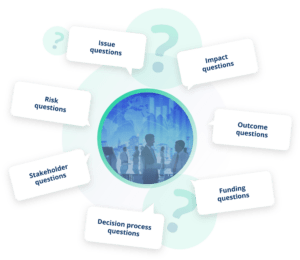 |
Curiosity kills the cat, but it also wins deals. The more you know about buyers, the better you can meet their needs and solve their problems. But to get to know them, you’ll need to ask the right questions and listen intently. Asking open-ended, layering, and probing questions is a skill that sellers must master to be successful. Active listening is another skill that sales training requires. Being authentically curious can be a skill that is developed with the right amount of sales training. |
Storytelling skills
The best salespeople I’ve worked with are the best storytellers. They tell customer stories from the heart, capturing customers’ attention by painting a comprehensive picture of the deal that focuses on value and emotion as driving forces.
Skilled storytellers set the scene with specific details like industry dynamics, company size, problems solved, and quantifiable benefits in a way that engages the listener to immediately relate. They also demonstrate empathy by relating stories to executives based on their role, their challenges, and their goals, making the narrative not just relevant but deeply personal.
Communication skills
Writing, listening, and communicating are important skills that often go overlooked. It’s important to invest the time to teach our customer-facing teams the art of writing compelling emails, not just prospecting emails, and creating value-based presentations and proposals.
Sellers need to be shown what good looks like, and they need to be trained on their slides before they share them with customers and prospects.
Presentation skills
Effectively delivering a presentation is all about being able to facilitate a conversation. Great presentation skills are grounded in curiosity, asking the right questions at the right time, and knowing when to stop talking.
It’s important to leave space for meeting participants to process your messages and then share feedback and/or ask questions. It’s not easy, but mastering presentation skills can be learned with a lot of practice and coaching.
Closing skills
Closing the sale is the hardest but also the most rewarding sales skill there is. It’s important that sellers learn different closing techniques, sales negotiations, objection handling, psychology to tonality, and the best strategies to use to close almost any sale.
Account management skills
From relationship building to renewals, strategic account management training focused on the skills required to grow and upsell existing accounts. Many of the core sales skills need to be applied, from discovery to qualification to closing.
Remote selling skills
Train your teams by practicing and coaching the skills needed to master remote selling from running remote meetings to digital selling to video selling. Effective virtual sellers have all the qualities that traditional sales professionals have. But they’re also technologically proficient and willing to learn all the skills needed to excel in the virtual selling space. Learn more about remote sales training here.
How role-based sales training builds better sellers
Customized sales training is a critical part of training personalization. Each customer-facing person needs a different combination of skills and, therefore, sales courses to be effective in the selling process. There’s a big difference between inbound selling skills, inbound sales, outbound sales, and field sales, so training should be personalized and curated by role.
Here’s an example of the sales skills and training required for two different sales roles.
| SALES ROLES & SKILLS | SALES SKILLS |
|
Sales Development (SDRs) |
|
|
Account Executives & Account Managers (AEs/AMs) |
|
The importance of choosing a sales methodology
Choosing a sales methodology is one of the most important decisions a company and vice president of sales can make to execute a successful go-to-market.
A sales methodology is invaluable to growing predictable revenue faster by aligning sales and marketing, guiding sales training, executing deals consistently, and making this part of the sales culture.
Every company should have a documented sales methodology that’s understood by each customer-facing employee, part of training/onboarding, and reinforced by front-line managers and VPs.
Companies need to then reinforce their sales methodology with sales training that’s relevant and customized to their business and customer buying patterns. It should reinforce best practices and sales methodology learning outcomes, be action-oriented, and include a dialogue about real deals.
It’s also a great best practice to introduce the sales methodology early in the onboarding journey of new hires. You can include deal-win stories that outline how your teams successfully executed the methodology.
Sales training done right will improve the adoption of your sales methodology, resulting in better win rates and faster sales cycle times.
If you want to go deeper on sales methodologies, here’s a great summary from Paul Butterfield on considerations for selecting a new sales methodology and sales process.
 |
Top sales training courses
Considering working with a sales training company? Take a closer look at these options. Many of them also offer online sales training programs.
Corporate Visions provides science-backed revenue growth services for sales, marketing, and customer success. Global B2B companies work with Corporate Visions to articulate value and promote growth. With Corporate Visions’ sales training, companies can bring together the right story and the right skills to have conversations that win across your marketing, sales, and customer success organizations.
Winning by Design is a global B2B revenue consulting and training company that enables recurring revenue teams to architect sustainable growth. Combining our specialized skills as operators of high-growth companies, we apply scientific frameworks and proven models to help Sales, Marketing, and Customer Success teams at B2B companies and global enterprises achieve impact.
Selling Through Curiosity™ helps companies achieve record breaking revenue growth results. The sales training program is delivered on-demand, live virtually and in-person. Powered by SalesHood, the system helps companies grow top-line revenue faster by automating and prescribing how sales training is delivered, reinforced and measured. The Selling Through Curiosity sales skills content and role-playing is optimized for asynchronous and synchronous learning, coaching and collaboration.
SalesHood’s sales training is designed to help customer teams navigate B2B SaaS sales. Remote sales and customer success teams significantly increase their productivity with SalesHood’s turnkey sales training Library which is accessible on all web browsers and mobile devices. SalesHood offers “coaching hurdles” that guide frontline managers and their teams through a structured learning experience that lets them proceed at their own pace while still feeling personally coached.
Sandler Training offers sales training to help companies transform sellers into highly skilled salespeople who understand the enterprise sales process and can deliver great value to customers. Enterprise processes often mean a higher cost of customer acquisition, a longer sales cycle, and a tougher audience for sales pitches. Sandler Training offers structured solutions for all those hurdles. This course includes training on account management, client mapping, relationship development, client retention, bid review, opportunity navigation, competitive positioning, and more.
